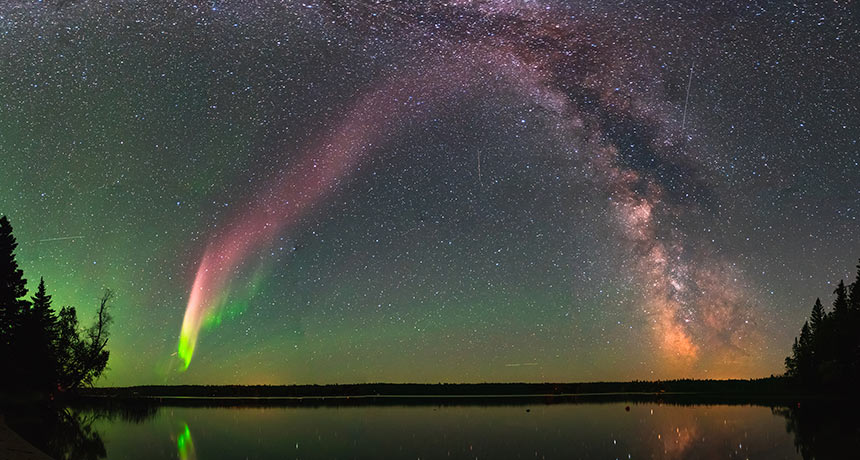acronym A word made by combining some of the starting letter or groups of letters from a number of words. For instance, STEM is an acronym for Science, Technology, Engineering and Math. Radar is an acronym for RAdio Detection And Ranging. Even laser is an acronym for Light Amplification by Stimulated Emission of Radiation.
atmosphere The envelope of gases surrounding Earth or another planet.
aurora A light display in the sky caused when incoming energetic particles from the sun collide with gas molecules in a planet’s upper atmosphere. The best known of these is Earth’s aurora borealis, or northern lights. On some outer gas planets, like Jupiter and Saturn, the combination of a fast rate of rotation and strong magnetic field leads to high electrical currents in the upper atmosphere, above the planets’ poles. This, too, can cause auroral “light” shows in their upper atmosphere.
coauthor One of a group (two or more people) who together had prepared a written work, such as a book, report or research paper. Not all coauthors may have contributed equally.
colleague Someone who works with another; a co-worker or team member.
ion (adj. ionized) An atom or molecule with an electric charge due to the loss or gain of one or more electrons. An ionized gas, or plasma, is where all of the electrons have been separated from their parent atoms.
latitude The distance from the equator measured in degrees (up to 90).
NASA Short for the National Aeronautics and Space Administration. Created in 1958, this U.S. agency has become a leader in space research and in stimulating public interest in space exploration. It was through NASA that the United States sent people into orbit and ultimately to the moon. It also has sent research craft to study planets and other celestial objects in our solar system.
particle A minute amount of something.
phenomenon Something that is surprising or unusual.
physicist A scientist who studies the nature and properties of matter and energy.
thermal Of or relating to heat.
velocity The speed of something in a given direction.








